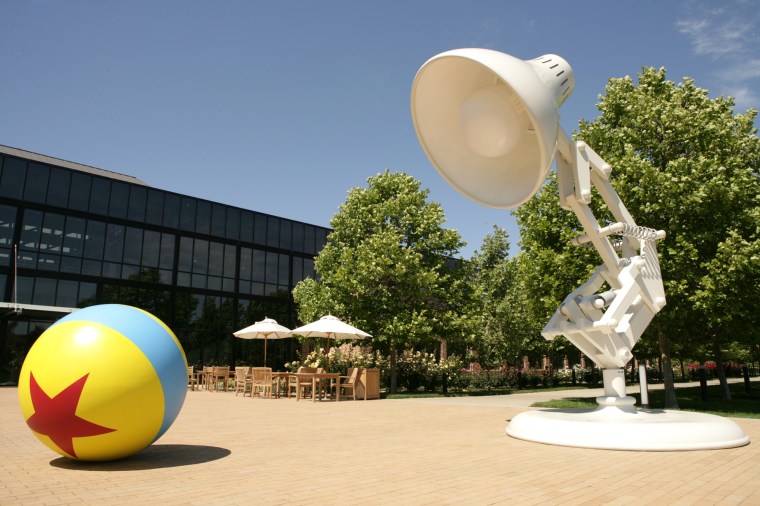Creativity, Inc. by Ed Catmull, Amy Wallace
At 27 years old, I still go through periods where I have my Disney playlist on repeat on Spotify. I grew up and enjoyed numerous Pixar classics such as Toy Story, Monsters, Inc., Finding Nemo, and Up. Seeing Pixar receiving exceptional reviews film after film, I come to expect a certain level of excellence from Pixar. What I failed to think about and to appreciate is all the effort required to deliver creative ideas year after year, let alone in an animated setting.
I first laid eyes on Creativity, Inc when it was shown on a book recommendation site. As there weren’t many books on creativity in the business section, this book stood out from the rest. I picked up the book to learn more about creativity, but I’m glad Ed also talks about Pixar’s inner workings and his take on the person Steve Jobs had become.

Foster a Creative Environment
A misconception on creativity is that to get more creative ideas you need more creative people. Although it is true that some people are more creative than others, we can increase the level of creativity by improving the environment which we work within.
To foster a creative environment, first off people need to feel free to speak their minds and to suggest ideas no matter how unconventional the ideas may be. This may sound simple, but this will require a culture of experimenting and taking risks.
Ideas are never perfect from the start. Contrary to what it may seem, Pixar films all started with simple ideas which turned out to be very different from the resulting films we see in theatres. It is through sharing ideas early and often for feedback that ideas are able to be shaped into something that can provide a lasting impact.
By looking at Pixar’s offices and specifically the Steve Jobs building, I can begin to understand how Pixar is able to consistently produce creative ideas.
“Steve Jobs wasn’t involved in making the movies, but he built this office using the same budget and the same amount of time as one of our movies. In a sense, this is his movie.” – John Lasseter, Chief Creative Officer at Pixar
Steve Job wanted the headquarters to be a place that promoted encounters and collaborations. This led to a big central hub in the middle of the building where employees will inevitably run into each other.
“If a building doesn’t encourage collaboration, you’ll lose a lot of innovation and the magic that’s sparked by serendipity. So we designed the building to make people get out of their offices and mingle in the central atrium with people they might not otherwise see.” – Steve Jobs
I’ll not go into the many details that went into the design of the Steve Jobs building. However, the takeaways are to promote communication and collaboration and allow employees to freely express themselves. If you want to learn more about what went into the design of the Steve Jobs building, here’s a great article which elaborates further on it.
Leadership
“It’s not the manager’s job to prevent risks. It’s the manager’s job to make it safe for others to take them.” – Ed Catmull
Since managers are often evaluated and negatively impacted by the errors that their teams make, they often put in measures to prevent risks. However, what this way of approach overlooks is that learning and creativity often come from taking risks. In order to push boundaries and to challenge existing ideas and processes, it will involve doing things out of the ordinary. So if you are in a leadership position, think about ways where you can create an environment where your team can experiment and take risks. Working as an engineer, this can mean having a sandbox environment for people to experiment with potential production changes. It is when you are not fearful of making mistakes, where your creativity can truly shine through.
“As your position changes, people will likely behave differently around you. You will be out of a certain loop and your access of information will be changed.” – Ed Catmull
Most of us have seen this happen to people around us and possibly to ourselves as well. People will likely behave differently when they are interacting with their managers as opposed to their peers. This is easy to spot when you are in an entry-level position or when you are observing the interactions of more senior employees. But when we get promoted ourselves, we often don’t take into consideration how other people will change their behavior when they are around us. New hires who only got to know you when you are in a leadership position tend to behave differently than your peers that you have been working together throughout the years. And as a leader, you will need to take into account that you might be out of a certain loop and lose access to certain information as people might be more inclined to hide their flaws and be more hesitant to provide criticisms. This can mean conducting more feedback sessions and spending more time to uncover different team dynamics.
When you are a leader, it’s your responsibility to get the best ideas out of your team. Push people to contribute and to voice their opinions no matter how much experience they have. If certain people don’t feel free to suggest ideas candidly, you’ll need to uncover why and address any potential issues in the workplace.
“We will always have problems, many of which are hidden from our view; we must work to uncover then and assess our own role in them, even if doing so means making ourselves uncomfortable; when we then come across a problem, we must marshal all our energies to solve it.” – Ed Catmull
Summary
Creativity, Inc. is a very well written book on Pixar and creativity. I came away with a deeper appreciation of animated films and the work involved to sustain a high level of creativity. My book review doesn’t do the book justice as there are many takeaways which Ed nicely summarized at the end of the book. I’ll recommend everyone to give the book a read.
Have you read this book? And is there any book you would recommend? I’ll love to hear your thoughts. 🙂
I’m currently reading Elon Musk by Ashlee Vance.

